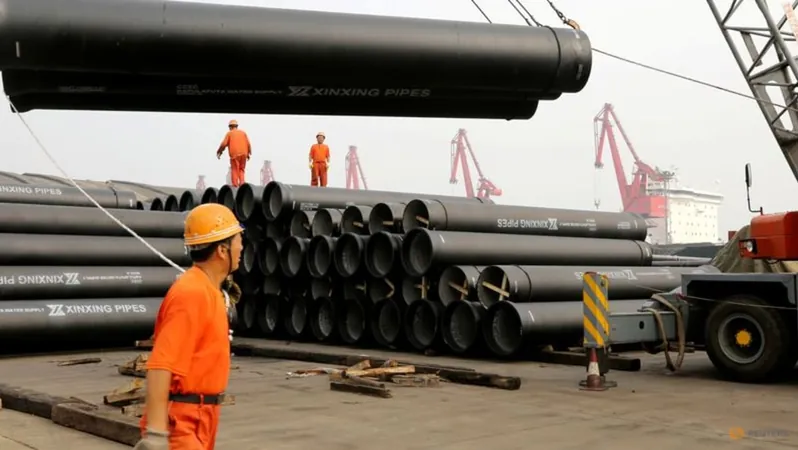
China's Manufacturing Boom: October Sees Unexpected Expansion, But Challenges Loom Ahead!
2024-11-01
Author: Yu
BEIJING: In a surprising turn of events, China's manufacturing sector has bounced back into growth mode this October, driven primarily by a surge in new orders, according to the newest data from the Caixin/S&P Global manufacturing Purchasing Managers' Index (PMI). This development indicates a positive shift at the onset of the final quarter of the year.
The Caixin PMI climbed to 50.3 in October, an increase from September's 49.3, surpassing analysts' expectations of 49.7 as surveyed by Reuters. This uptick marks the first expansion of manufacturing activity since April, echoing the findings of an official government survey released the day prior.
These figures come on the heels of new stimulus measures introduced by Beijing in late September, aimed at revitalizing economic growth toward a target of approximately 5% for the year. As the government seeks to combat the persistent downturn in the property market and revitalize consumer confidence—currently at record lows—investors are closely monitoring the government's fiscal maneuvers.
Recent reports suggest that China is contemplating a significant issuance of additional debt, potentially exceeding 10 trillion yuan (around US$1.4 trillion) over the next few years. This bold move could play a crucial role in shoring up the fragile economy.
The Caixin survey revealed that the volume of new orders pouring into Chinese factories witnessed the fastest growth in four months, sparking a notable acceleration in production akin to the levels seen in June. Optimism among manufacturers has also risen, with confidence regarding future output reaching its highest point in five months.
Amid this growth, purchasing activity has surged, prompting manufacturers to stockpile inventories in response to increased workloads, although this has resulted in some delays in shipping.
However, not all news is rosy. Both input and output prices saw slight increases, while new export orders have contracted for three consecutive months, albeit at a slower pace than before. Market nerves are particularly frayed ahead of the upcoming US presidential election, with fears that a potential victory for Republican candidate Donald Trump could lead to harsher tariffs on Chinese goods, jeopardizing this year's already fragile export sector.
Moreover, despite the influx of new work, job losses in factories have accelerated, hitting their fastest rate since May 2023. Many companies are opting to cut temporary staff and are hesitant to fill positions left vacant by departing workers.
Wang Zhe, a senior economist at Caixin Insight Group, emphasizes that while the labor market remains under strain, broader price levels are still subdued. He warns that hitting China's growth targets for 2024 will hinge on a sustained rebound in consumer demand, urging policymakers to develop strategies that more effectively boost household disposable income.
As China's economic landscape continues to evolve, all eyes will be on the government's next steps to ensure stability and growth in this vital sector. Will these measures be enough to weather the looming challenges in the global marketplace? Stay tuned to find out!




 Brasil (PT)
Brasil (PT)
 Canada (EN)
Canada (EN)
 Chile (ES)
Chile (ES)
 España (ES)
España (ES)
 France (FR)
France (FR)
 Hong Kong (EN)
Hong Kong (EN)
 Italia (IT)
Italia (IT)
 日本 (JA)
日本 (JA)
 Magyarország (HU)
Magyarország (HU)
 Norge (NO)
Norge (NO)
 Polska (PL)
Polska (PL)
 Schweiz (DE)
Schweiz (DE)
 Singapore (EN)
Singapore (EN)
 Sverige (SV)
Sverige (SV)
 Suomi (FI)
Suomi (FI)
 Türkiye (TR)
Türkiye (TR)